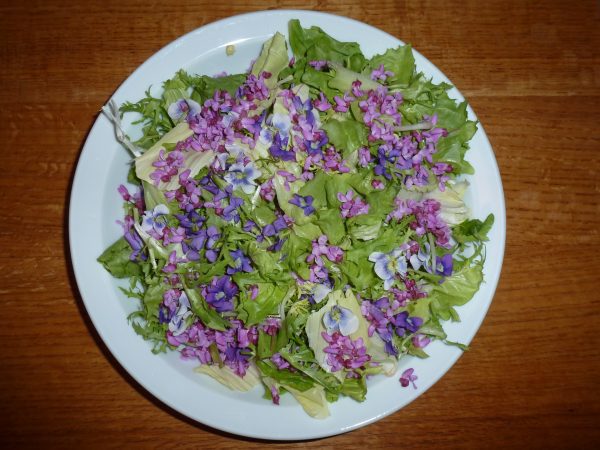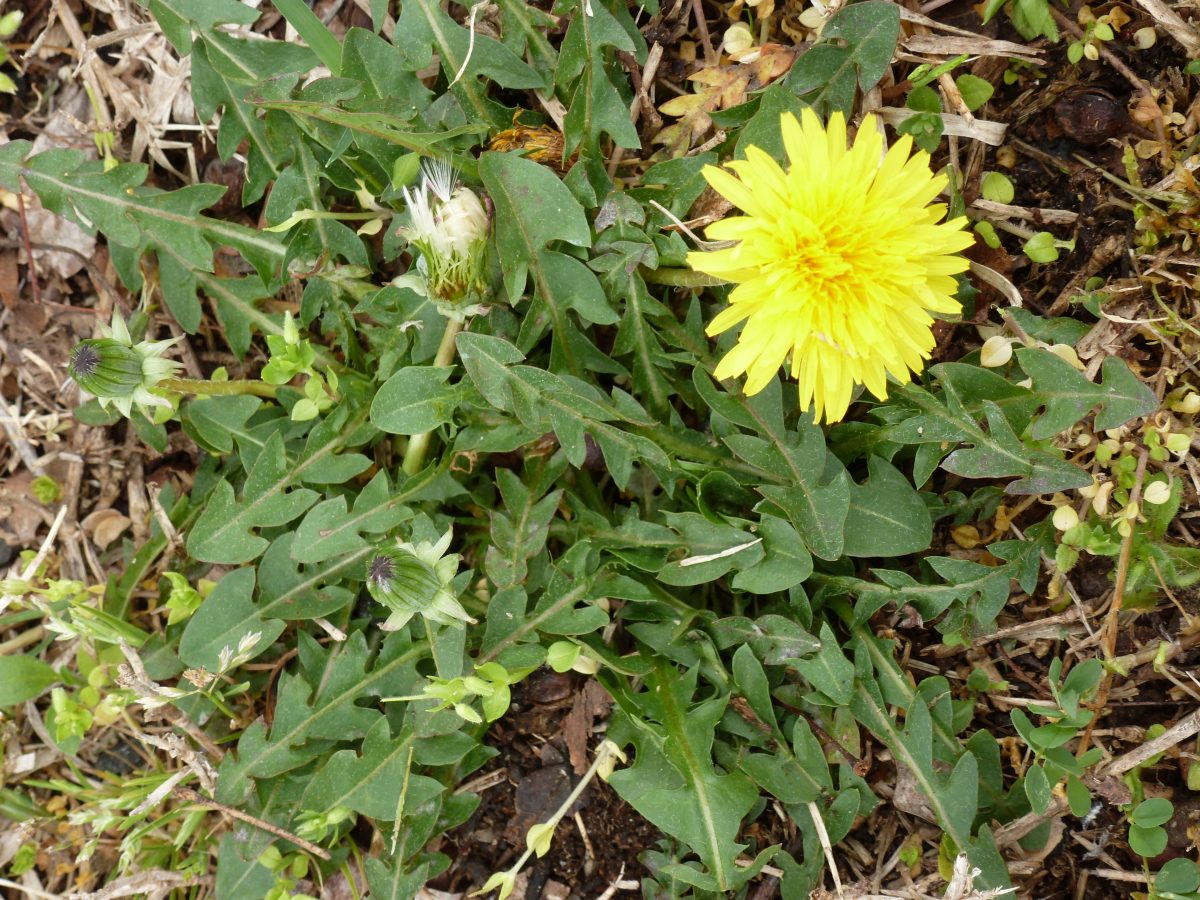Get revenge on weeds: Eat them

Our yard in the Uwharries always looks especially mangy in early spring. I wouldn’t presume to call it a lawn. That sounds much too manicured and highfalutin. The fescue is green, but it tends to get lost in a flush of winter annuals like chickweed, buttercups and henbit. These weeds will die back after setting their seed, and the fescue will grow and fill in enough of the gaps to suit me.
Like many women in my family, I prefer yard work to housework, except when it comes to turf management. Labor doesn’t satisfy a lawn – it also craves water, fertilizer and herbicides. A pampered expanse of zoysia or fescue certainly has its charms – it’s easy on the eyes and tickly on bare feet – but I’m not one to coddle plants. Since weeds are a fact of life in my yard, I’ve tried to make peace with them. Sometimes I eat them.
We seem to have a love-hate relationship with dandelions (Taraxacum officinale). Children of all ages delight in dispersing their fluffy seeds. It’s probably one of our first interactions with nature. Somewhere along the way, we lose that sense of wonder and begin to see their flowers as yellow stains on an expensive green carpet. Look again. The dandelion is one of our most versatile vegetables. The flowers can be used to make dandelion wine, and the roots can be roasted and used as a substitute for coffee. The greens are higher in beta-carotene than carrots and richer in iron and calcium than spinach.
When Italian dandelions appeared at my local farmers market, I assumed I was buying a cultivated variety of the weed, but I was disappointed to learn they’re actually related to chicory.  They were apparently given this misleading name because the leaf has a similar, serrated edge. Next spring, I plan to try the real thing. I’ll avoid the areas where Buster likes to do his business and gather a mess of flat rosettes before they bloom and turn bitter.
They were apparently given this misleading name because the leaf has a similar, serrated edge. Next spring, I plan to try the real thing. I’ll avoid the areas where Buster likes to do his business and gather a mess of flat rosettes before they bloom and turn bitter.
As long as I can remember, we’ve always had a large patch of violets near my grandparents’ farmhouse. I’ve never thought of them as a nuisance, but some people apparently resent having violets pop up in their lawn. In addition to the common blue violet (Viola sororia), which can also appear in a white form, two smaller species of violas are sometimes found in our yards – field pansy (Viola bicolor) and Johnny jump-ups (Viola tricolor).
Napoleon Bonaparte was wild about violets. His beloved Josephine often pinned them to the neckline of her dress or arranged them in her hair. It might seem odd that a man who crowned himself emperor could also appreciate such a common flower, but the French embrace this sort of contradiction. They have a knack for elevating humble ingredients into culinary works of art. In the south of France, violets are candied or crystallized then eaten as sweets or used to decorate cakes. The process sounds simple enough – wash and dry the flowers, dip them first in egg whites, then in sugar, and lay them out to dry. Bejeweled with sugar crystals, violets become worthy of a coronation.
I’m not much of a baker, but I have used common blue violets to great effect in salads. They have a mild, appealing flavor. My godson, Colin, tried some and shrugged. “Tastes like salad,” he said. My nephew, Lee, agreed. I recently combined them with the pinkish-purple blooms of our native redbud trees, which a few people also consider weedy. Their flavor is more assertive and complex – nutty, tangy and sweet. When my niece, Stella, saw them together on a bed of local lettuce, she seemed downright giddy at the prospect of eating flowers. That’s reason enough to add a few weeds to your diet.
If you’re inspired to forage farther afield, consult a guidebook first. Not all plants are edible. Some are palatable only during certain seasons or stages of growth, and a few can be toxic. You’d do well to start with the Euell Gibbons classic, Stalking the Wild Asparagus. Perhaps best remembered for appearing in a Grape Nuts commercial (Ever eat a pine tree?), Gibbons first turned to collecting food from the wild out of necessity – to keep his family from starving during the Dust Bowl era – but he later enjoyed it as a form of recreation. He also liked having a connection to the food he ate, and he thought the variety and quality was far superior to anything found in grocery stores. Fifty years later, with many of us attuned to the local foods movement, his vision still seems as fresh as the foods he taught us to gather.